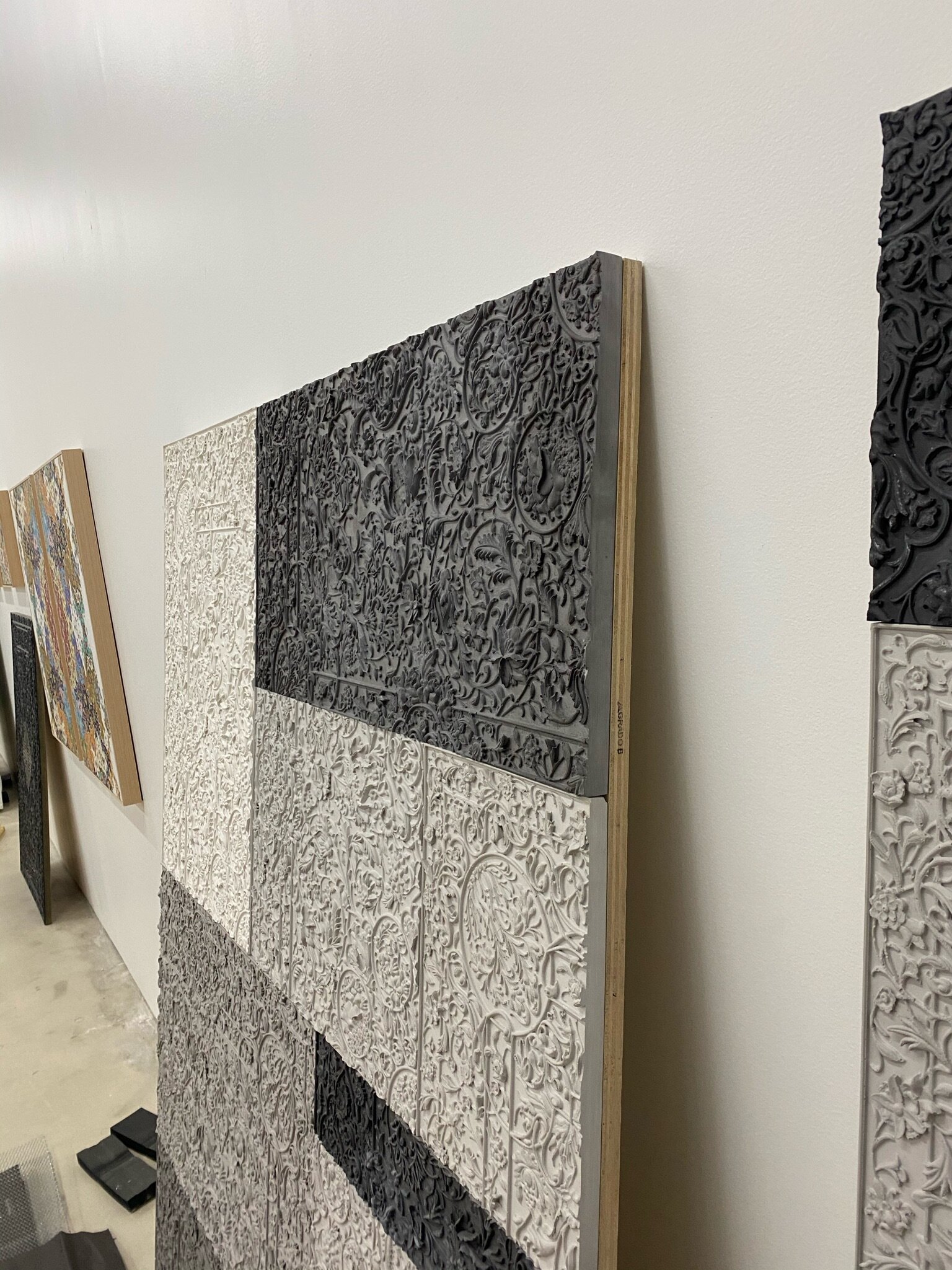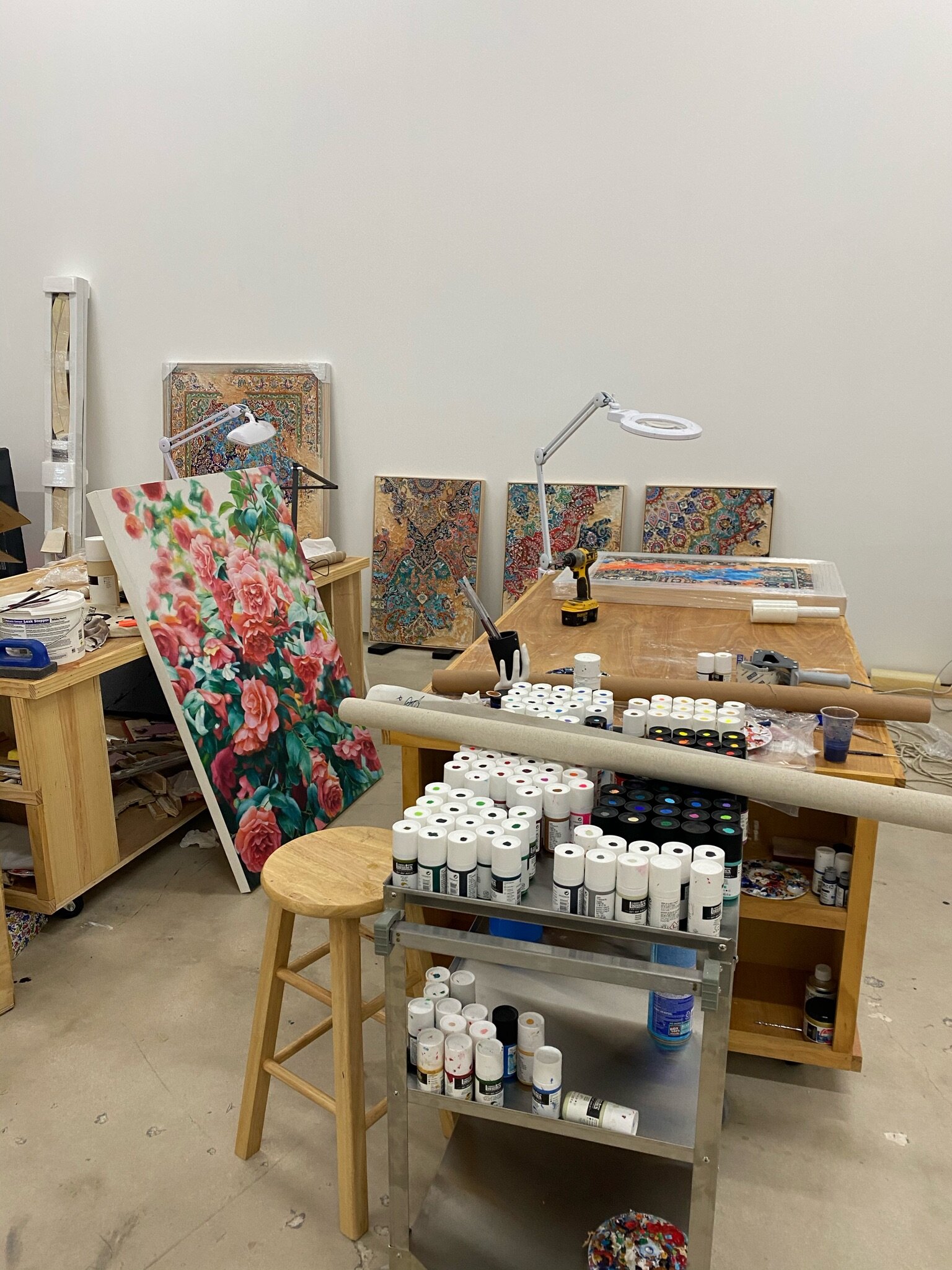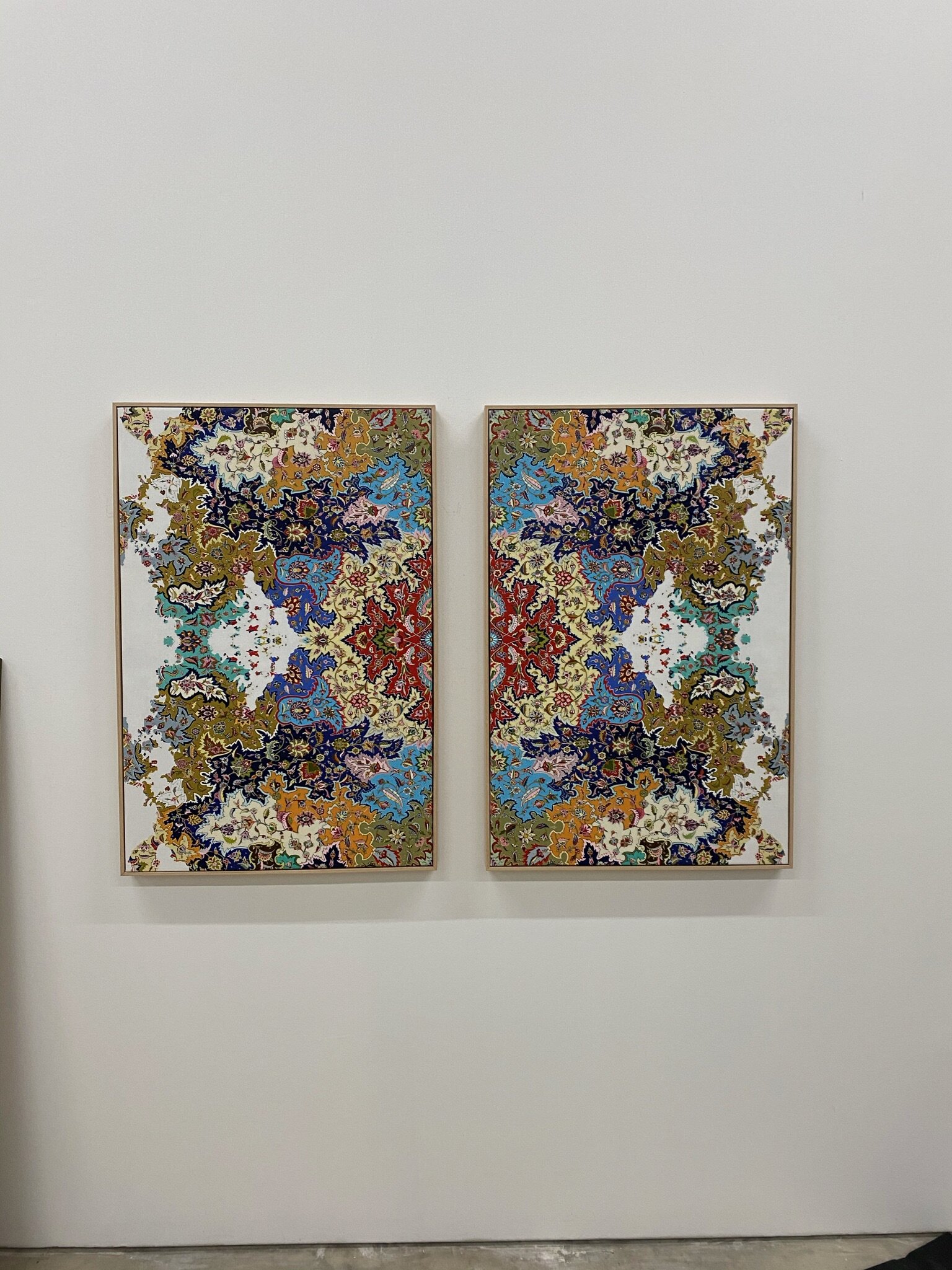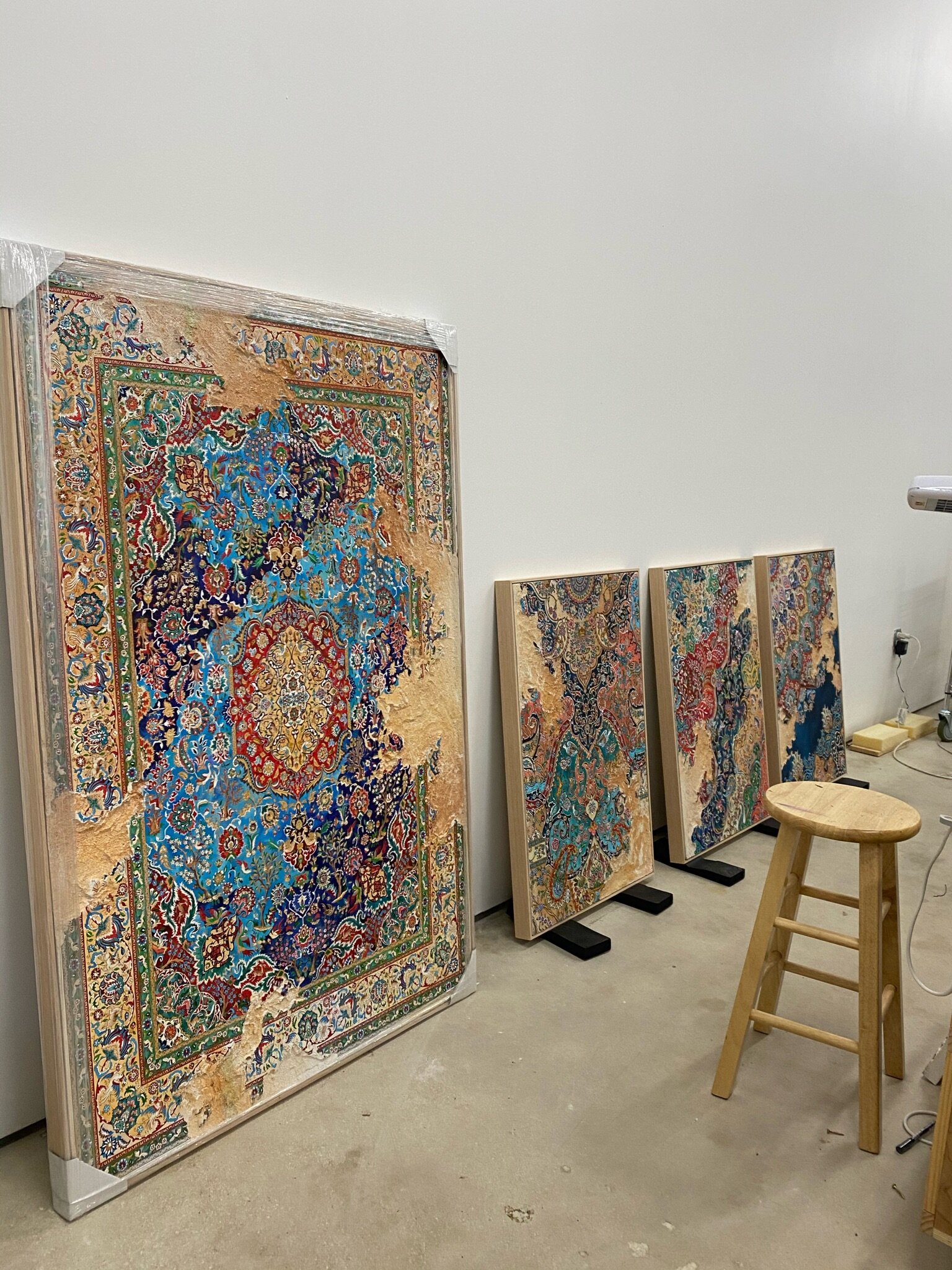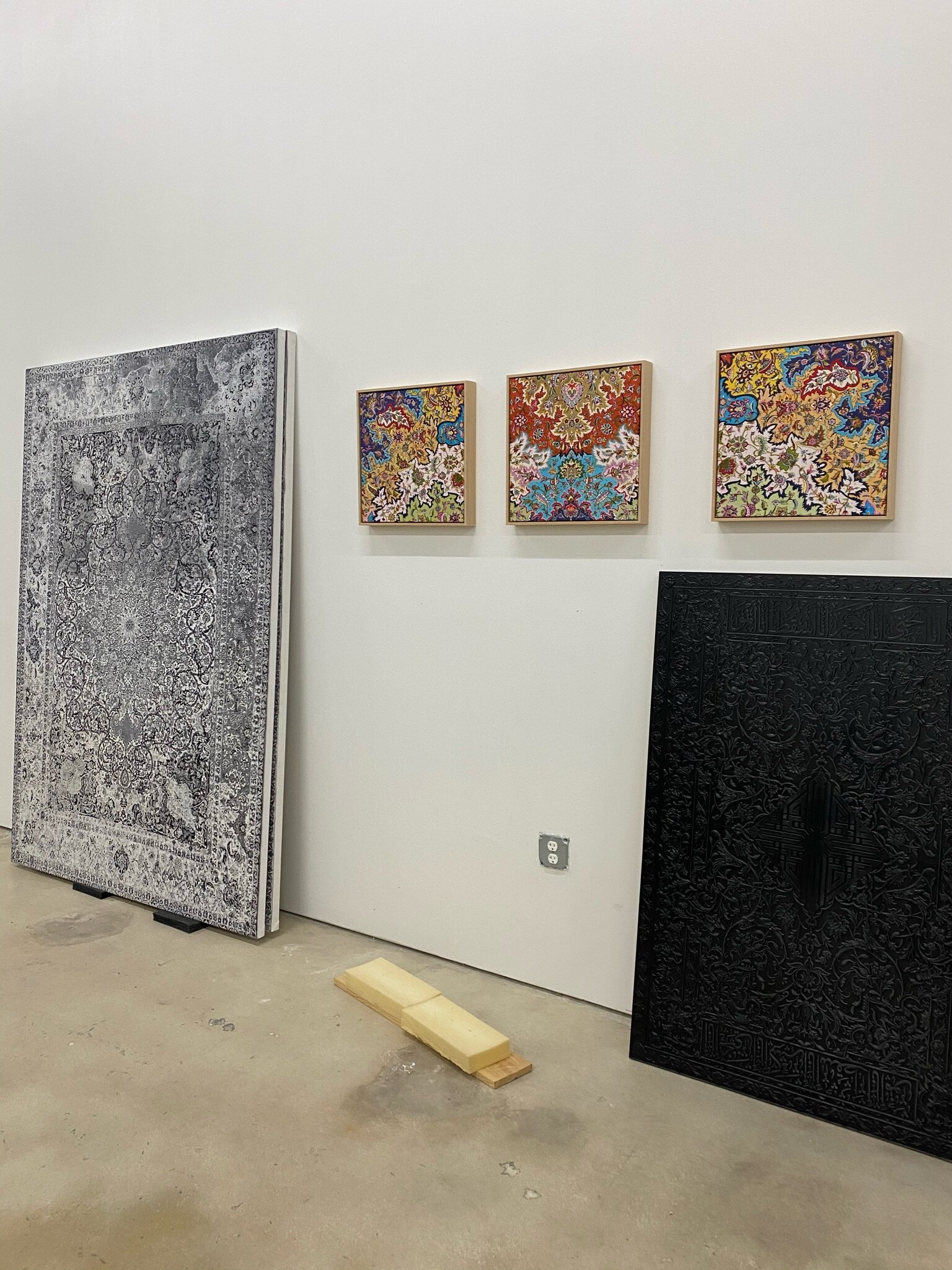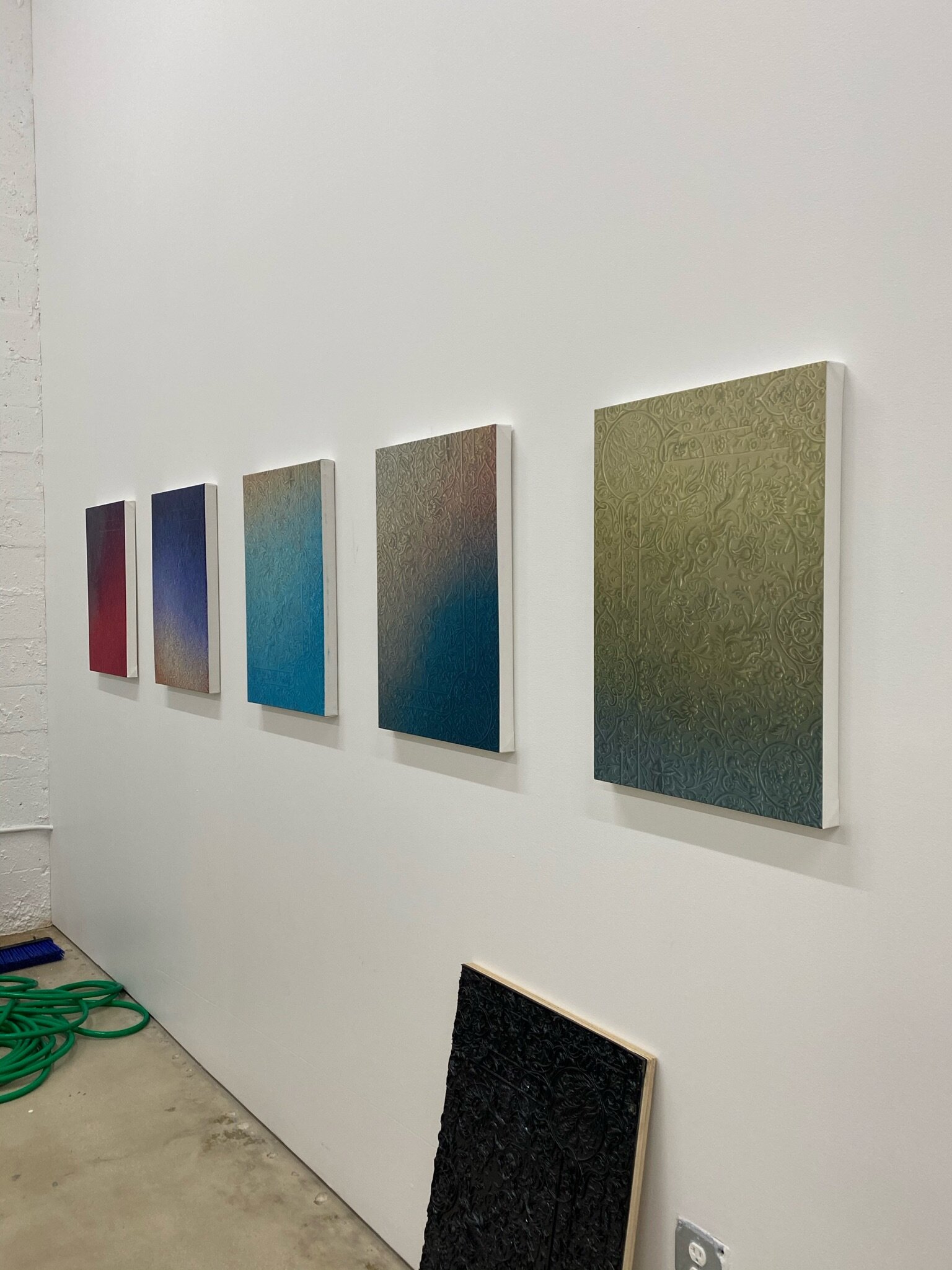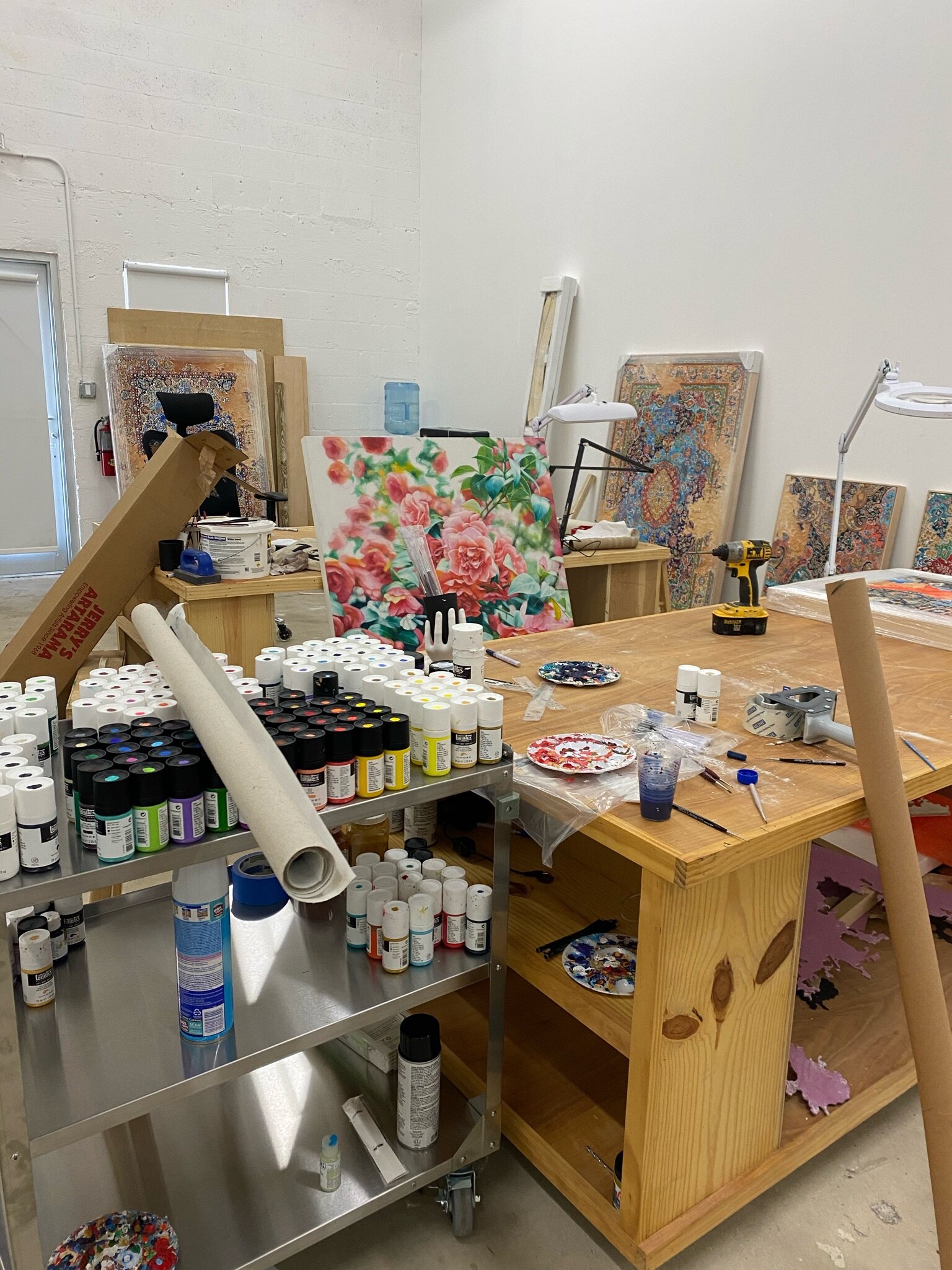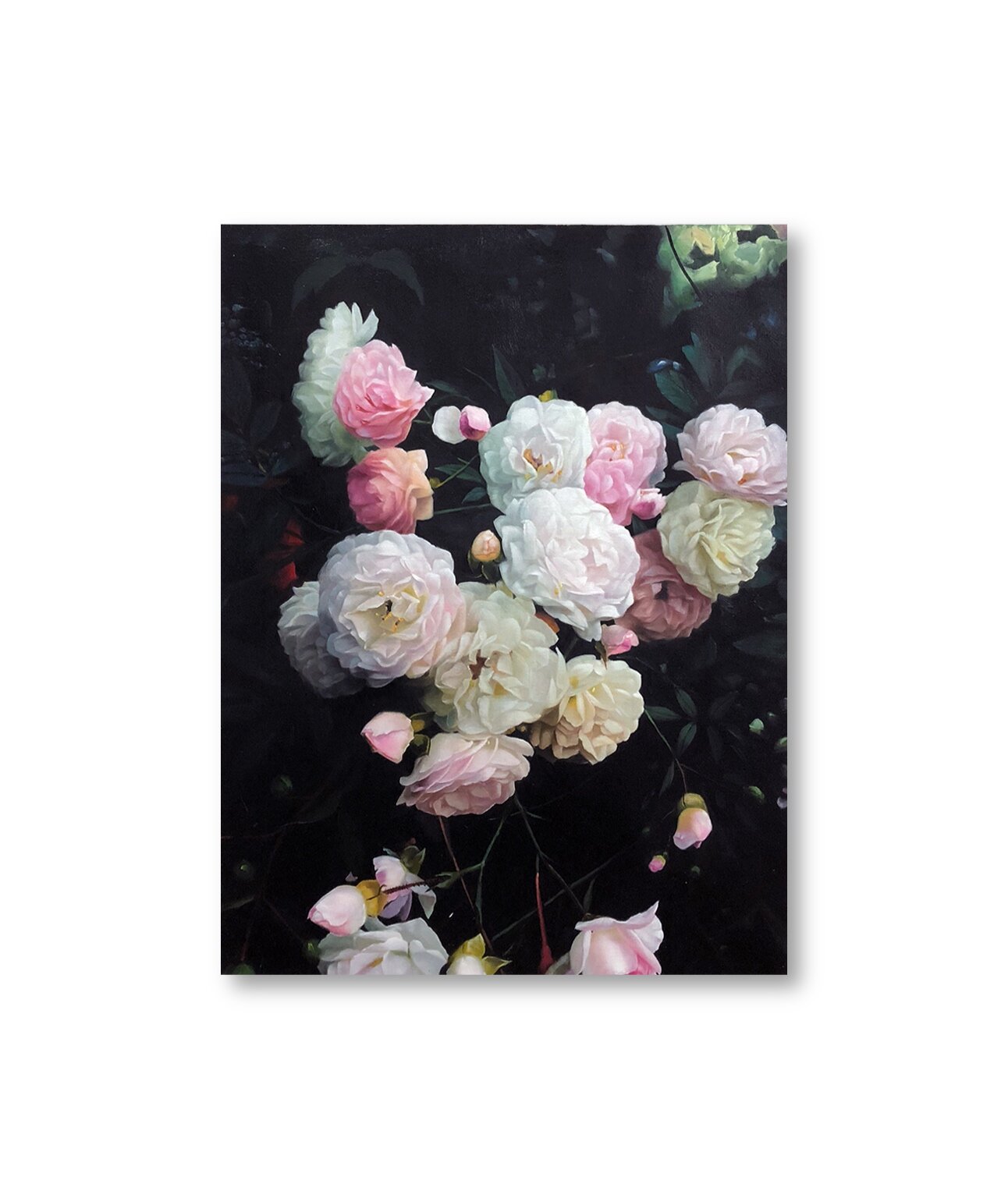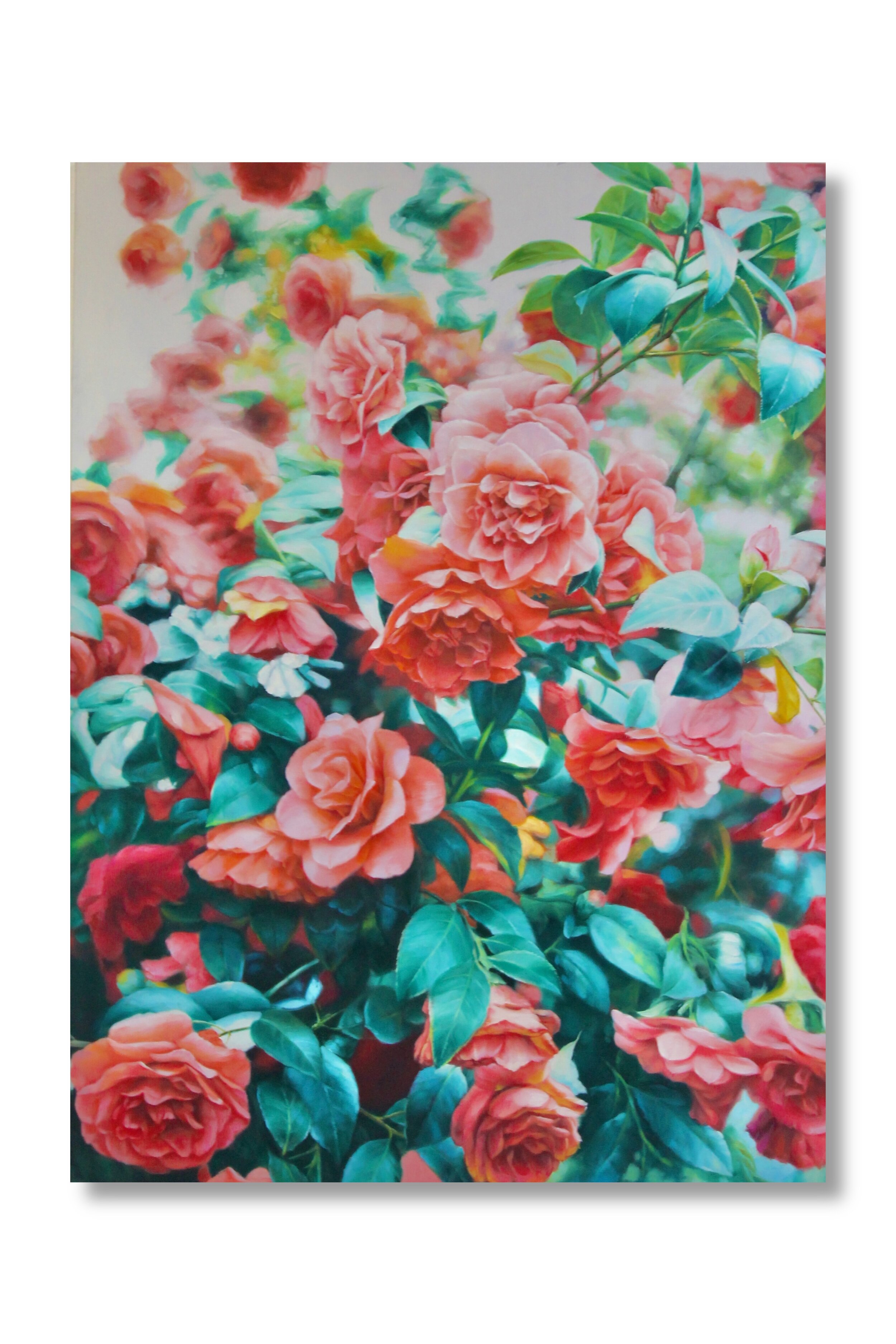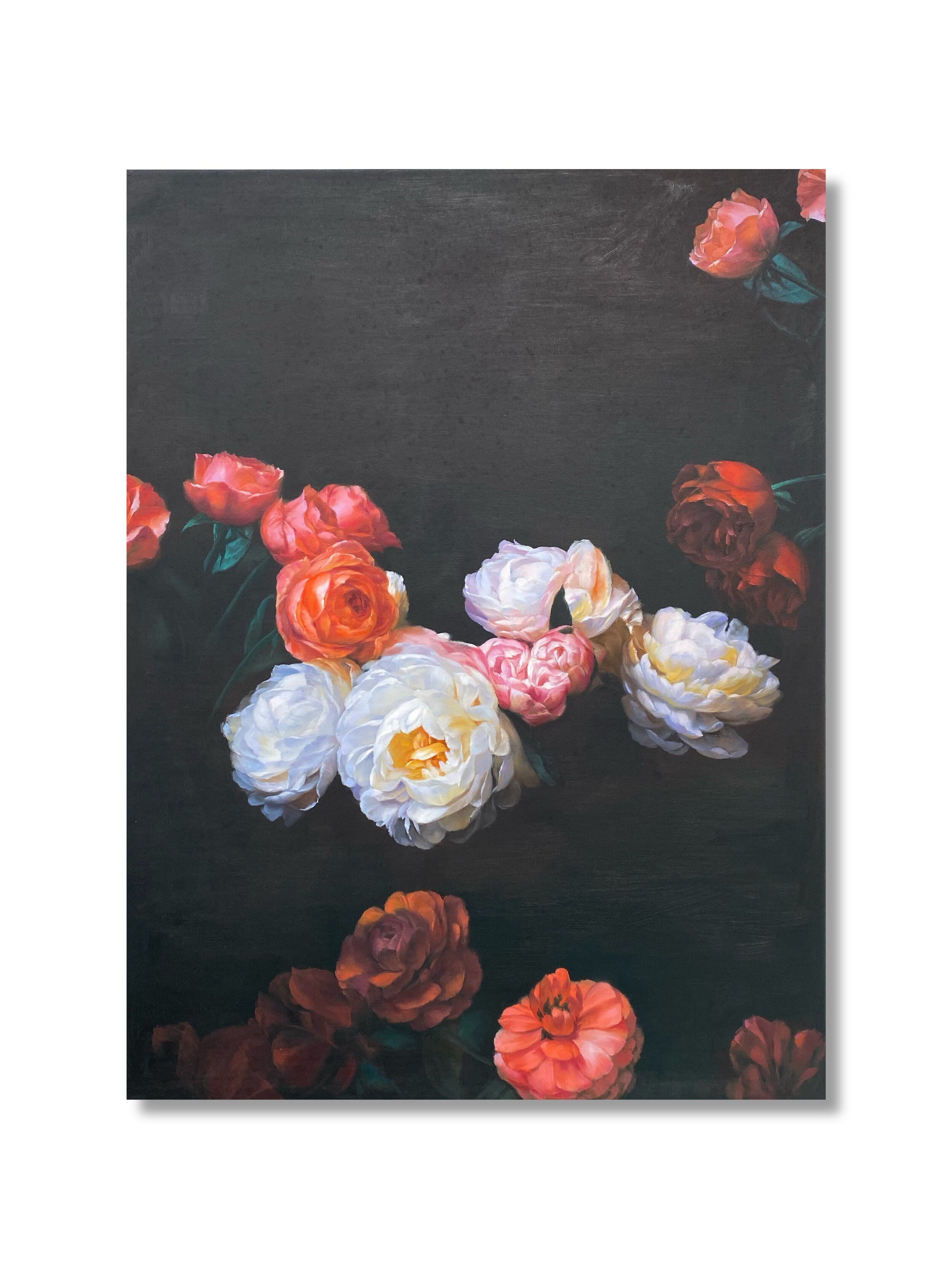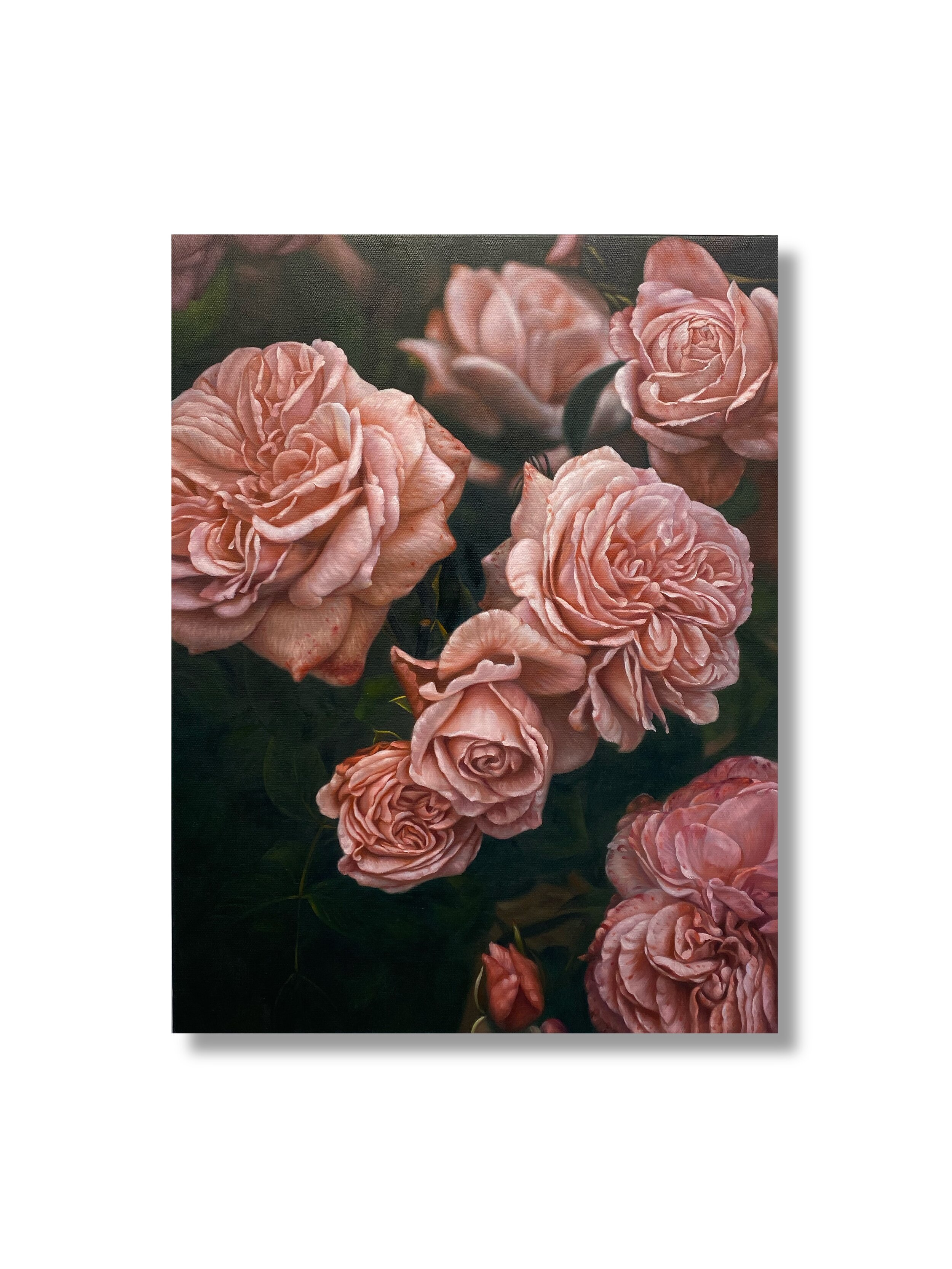Jason Seife
(B. 1989)
Jason Seife, “Untitled”, 2020. Oil on Canvas, 90” x 50” in
“It’s not common for buildings to be painted after they’re completed in the middle east. Usually, the raw limestone or whichever the stone used is left exposed. With time this causes what I find to be a gorgeous natural abstraction.”
- Jason Seife, Art Market Magazine
Jason Seife’s work references old Persian carpets, an art form that in modern times is often taken for granted. Carpets were a large part of his childhood growing up with immigrant parents of Middle Eastern descent. Jason recreates these old weavings by tediously painting them on canvas in colors and mediums that were not normally used in their origin.
Seife’s meticulous process commences with a sketch inspired by Middles-Eastern carpet artisans, which often include complex intertwining of botanic shapes and traditional arabesque patterns. Once his sketch is complete, Seife then creates a 3D rendering on his computer, where he is able to explore and manipulate different hues and light. Through this process, Seife is able to convey a powerful use of negative space that transcends his works into timeless masterpieces. This process completes a reference image that then Seife takes to the canvas to create by hand, something that is both therapeutic and a spiritual process. Through his process, Seife is able to channel his obsession with detail into the intricate geometry, while the compositions of the carpets allows Jason to find himself working hours on end without lifting his brush.
The inspiration for Seife’s work is based around the notion that we can reinvent the past using modern day materials and compositions, allowing the excellence of an old craft to be admired by a younger generation. Seife was inspired by both his own Middle Eastern heritage and the complex artistic practice of Persian rug weaving. The original designs are laden with hidden meaning and language; the weavers were able to link each rug's particular pattern, palette, and style with a specific and identifiable geographic area or community.
What initially drew him to these works was not only the aesthetic but the dense history and meaning behind the imagery. The way the weavers were able to link each rug’s particular pattern, palette, and style with a specific and identifiable geographic area or nomadic tribe really stood out to him.
Jason Seife at his Studio in Miami, FL
Jason Seife, Gradient Paintings Series, 2020







